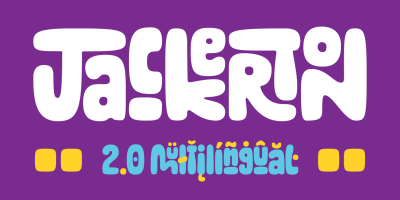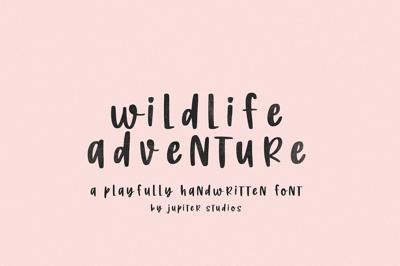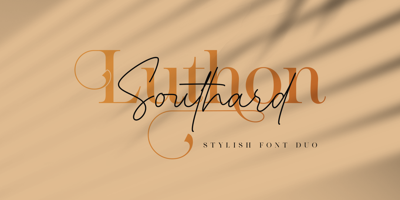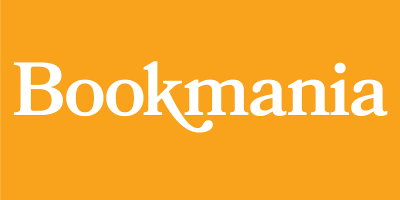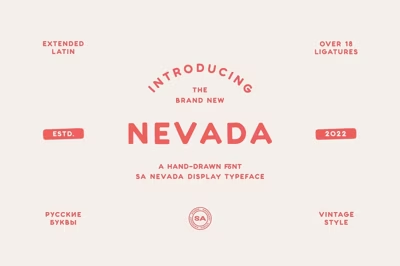The Art of Readable Design: Balancing Beauty and Function
The Art of Readable Design: Balancing Beauty and Function
The greatest challenge in typography lies not in creating beautiful letterforms, but in achieving the delicate balance between aesthetic appeal and functional readability. Too often, designers sacrifice clarity for visual impact, creating stunning layouts that fail their primary purpose: clear communication. Mastering readable design requires understanding how beauty and function can enhance rather than compete with each other, creating typography that captures attention while delivering messages effectively and accessibly.
Understanding the Readability-Beauty Spectrum
Readability and visual appeal exist on a spectrum rather than as opposing forces. The most successful designs find the sweet spot where aesthetic sophistication enhances rather than hinders message comprehension and user experience.
The False Dichotomy: Many designers incorrectly assume that improving readability requires sacrificing visual interest. This misconception leads to either boring, overly functional designs or beautiful but illegible layouts. Professional typography transcends this false choice by using aesthetic elements strategically to support reading comprehension.
Synergistic Design Principles: Well-crafted typography uses beauty as a tool for improving function. Elegant letter spacing enhances readability while creating visual refinement. Thoughtful color choices improve text hierarchy while adding aesthetic appeal. Strategic font selection provides personality while optimizing comprehension.
The Psychology of Beautiful Readability: Aesthetically pleasing typography creates positive emotional responses that encourage reading engagement. Beautiful design builds trust and credibility that makes audiences more receptive to content. However, beauty without functionality quickly becomes frustrating, destroying the initial positive impression.
User Experience Integration: Readable design considers the complete user journey from initial visual impression through content consumption and action completion. Every typographic choice must support both immediate aesthetic impact and sustained functional performance throughout user interactions.
The Science Behind Readable Typography
Understanding the physiological and psychological processes of reading provides the foundation for creating typography that works effectively while maintaining visual appeal.
Eye Movement and Reading Patterns: Reading involves complex eye movements including saccades (jumps between fixation points) and return sweeps (movement to the next line). Typography that facilitates these natural patterns improves reading speed and comprehension while reducing fatigue.
Cognitive Load Management: Poor typography increases cognitive load by forcing readers to work harder to decode letters and understand text structure. Readable design minimizes cognitive burden, allowing readers to focus on content meaning rather than deciphering presentation.
Attention and Focus Optimization: Strategic typography hierarchy guides reader attention through content in logical sequences. Visual hierarchy reduces decision fatigue by making information priority obvious, supporting both aesthetic organization and functional navigation.
Memory and Retention Enhancement: Well-structured typography improves information retention by creating memorable visual patterns that support content organization in reader memory. Beautiful typography that also functions well creates positive associations that enhance message recall.
Font Selection for Readable Beauty
Choosing fonts that deliver both aesthetic appeal and functional performance requires understanding how different typeface characteristics influence reading experience across various applications and contexts.
Character Legibility Fundamentals: Individual character recognition forms the foundation of readable typography. Letters must remain distinguishable at different sizes and viewing conditions while contributing to overall design aesthetics. Consider how character shapes perform in both ideal and challenging reading environments.
X-Height and Reading Comfort: Fonts with generous x-heights typically provide better readability, especially at smaller sizes and on digital screens. However, extremely large x-heights can reduce elegance and distinctive character. The optimal balance depends on specific application requirements and aesthetic objectives.
Font Weight Distribution: Medium font weights often provide the best balance between readability and visual appeal. Ultra-light fonts may appear elegant but can disappear on screens or in challenging lighting conditions. Extremely bold fonts create impact but can overwhelm readers during extended reading sessions.
Character Spacing and Rhythm: Well-designed fonts include carefully crafted character spacing that creates comfortable reading rhythm while maintaining visual elegance. Poor spacing creates reading difficulties regardless of individual character quality, making spacing evaluation crucial for font selection.
Many free font options now provide professional-quality character design and spacing that rivals premium alternatives. Google Fonts and similar services offer extensive collections with detailed technical specifications that help identify fonts optimizing both beauty and readability.
Color and Contrast for Functional Beauty
Color choices dramatically impact both aesthetic appeal and reading functionality, making color strategy essential for achieving readable beauty in typography design.
Contrast Ratio Optimization: Adequate contrast between text and background ensures readability while providing opportunities for sophisticated color schemes. WCAG guidelines provide minimum contrast ratios, but exceeding these minimums often improves both accessibility and visual appeal.
Color Psychology and Reading: Different colors trigger distinct psychological responses that influence reading behavior and content perception. Blue text often enhances trust and comprehension, while red creates urgency but can increase reading stress. Understanding color psychology helps choose palettes that support both aesthetic goals and reading effectiveness.
Brand Color Integration: Incorporating brand colors into typography requires balancing brand consistency with readability requirements. Sometimes brand colors work excellently for headlines but poorly for body text, requiring systematic color hierarchies that maintain brand identity while optimizing function.
Environmental Considerations: Typography color must perform across different viewing environments, from bright outdoor screens to dim indoor lighting. Colors that appear beautiful in controlled design environments may fail in real-world usage contexts, making environmental testing crucial.
Spacing and Layout for Reading Flow
White space and layout decisions profoundly influence both aesthetic appeal and reading experience, creating opportunities to enhance beauty through functional improvements.
Line Spacing and Reading Rhythm: Appropriate line spacing (leading) creates comfortable reading rhythm while contributing to overall design elegance. Too-tight spacing creates cramped, stressful reading experiences, while excessive spacing disrupts reading flow and wastes valuable layout space.
Paragraph Structure and Visual Breaks: Strategic paragraph spacing provides natural reading breaks that prevent overwhelming text blocks while creating attractive page layouts. Well-structured paragraphs guide readers through content logically while maintaining visual interest.
Margin and Padding Strategy: Generous margins create comfortable reading environments while establishing sophisticated layouts that feel intentionally designed rather than cramped. Strategic margin use demonstrates design sophistication while improving content accessibility.
Column Width and Reading Comfort: Optimal line lengths reduce eye fatigue and improve reading speed while creating attractive page proportions. Extremely long lines force uncomfortable eye movements, while very short lines create choppy reading rhythms that disrupt comprehension.
Mobile and Responsive Readable Design
Modern typography must perform beautifully and functionally across diverse screen sizes and device types, requiring systematic approaches to responsive readable design.
Screen Size Optimization: Fonts that work perfectly on desktop screens may become illegible on mobile devices where smaller sizes and different viewing distances create new readability challenges. Responsive typography adapts to different contexts while maintaining aesthetic consistency.
Touch Interface Considerations: Mobile reading involves different interaction patterns including scrolling, pinching, and touch navigation that influence typography requirements. Readable mobile design considers these unique interaction patterns while maintaining visual appeal.
Loading Performance and Beauty: Beautiful typography means nothing if slow loading times prevent content access. Free font services like Google Fonts provide optimized delivery that ensures rapid loading while maintaining design quality and aesthetic appeal.
Cross-Device Consistency: Brand typography must maintain recognizable character across different devices while adapting to specific platform requirements. Successful responsive typography preserves brand identity while optimizing for device-specific functionality.
Accessibility as Beautiful Design
Accessible typography often creates more beautiful and effective designs by forcing attention to fundamental design principles that benefit all users.
Universal Design Principles: Designing for accessibility often improves design quality for everyone by emphasizing clarity, consistency, and logical organization. Many accessibility improvements enhance rather than compromise aesthetic appeal.
Color-Blind Friendly Palettes: Designing for color vision differences often produces more sophisticated color schemes that rely on contrast and texture rather than color alone. These approaches typically create more elegant and timeless design solutions.
Screen Reader Compatibility: Typography that works effectively with screen readers typically features clearer hierarchy and more logical structure that also benefits visual readers. Accessible design practices often improve overall design organization and effectiveness.
Cognitive Accessibility: Typography that supports users with cognitive differences typically emphasizes clarity and simplicity that creates more elegant and effective communication for all audiences.
Cultural Considerations in Readable Beauty
Global design work requires understanding how different cultures perceive both beauty and readability, ensuring typography works effectively across diverse audience contexts.
Reading Pattern Variations: Different languages and cultures have distinct reading patterns that influence optimal typography design. Left-to-right, right-to-left, and vertical reading patterns require different approaches to hierarchy and layout organization.
Aesthetic Preference Differences: Cultural background influences aesthetic preferences including color associations, spacing comfort levels, and font personality perceptions. Successful international typography balances universal readability with cultural appropriateness.
Language-Specific Requirements: Different languages have unique typography requirements including character set needs, spacing patterns, and hierarchy conventions. Free font collections increasingly provide comprehensive multilingual support that maintains quality across different writing systems.
Testing and Optimization Strategies
Achieving optimal balance between beauty and function requires systematic testing approaches that validate design decisions with real users in realistic usage contexts.
User Testing Methodologies: Conduct reading comprehension tests that measure both speed and accuracy across different typography options. Include aesthetic preference surveys that reveal how visual appeal influences user engagement and content consumption.
A/B Testing Implementation: Test different typography approaches with actual audiences to measure impact on engagement metrics, conversion rates, and user satisfaction. A/B testing reveals which beautiful designs actually improve functional performance.
Performance Analytics: Monitor reading engagement metrics including time on page, scroll depth, and content completion rates to understand how typography influences user behavior. Analytics provide objective measures of typography effectiveness.
Continuous Optimization: Readable design requires ongoing refinement based on user feedback and performance data. The best typography solutions evolve through systematic improvement rather than single perfect implementations.
Tools and Technologies for Readable Beauty
Modern typography tools provide capabilities for creating designs that optimize both aesthetic appeal and functional performance through systematic approaches and technical optimization.
Typography Testing Tools: Use contrast checkers, readability analyzers, and accessibility auditing tools to validate typography choices against functional requirements while maintaining design freedom for aesthetic decisions.
Performance Optimization: Implement font loading strategies that prioritize content accessibility while maintaining design quality. Free font services provide optimized delivery systems that ensure both beautiful presentation and functional performance.
Responsive Design Systems: Develop typography systems that adapt gracefully across different devices and contexts while maintaining brand consistency and aesthetic appeal throughout all user experiences.
Future Trends in Readable Beauty
Typography technology continues evolving with new capabilities that enhance both aesthetic possibilities and functional performance through innovative technical solutions.
Variable Font Innovation: Variable fonts enable dynamic typography that adapts to optimize both beauty and readability based on context, screen size, and user preferences. This technology provides unprecedented flexibility for balancing aesthetic and functional requirements.
AI-Assisted Typography: Artificial intelligence tools increasingly provide typography recommendations based on readability optimization and aesthetic preferences, helping designers achieve better balance between beauty and function through data-driven insights.
Personalization Technologies: Future typography may adapt automatically to individual user preferences and accessibility needs while maintaining brand consistency and aesthetic quality across diverse user experiences.
Conclusion: Mastering the Balance
The art of readable design lies in understanding that beauty and function enhance rather than compete with each other when approached strategically and systematically. The most successful typography achieves aesthetic sophistication through functional excellence rather than despite it.
Remember that readable beauty serves audiences first while supporting brand objectives and aesthetic goals. The most gorgeous typography means nothing if audiences cannot easily consume and understand your content.
Whether working with premium fonts or carefully selected free font alternatives, focus on creating typography that draws readers in through visual appeal and keeps them engaged through functional excellence. This balanced approach creates sustainable design solutions that serve both immediate aesthetic goals and long-term user satisfaction.
Start evaluating your typography through the lens of readable beauty rather than choosing between aesthetic appeal and functional performance. The best design solutions optimize both simultaneously, creating typography that works as effectively as it looks.
The future belongs to designers who master this balance, creating beautiful typography that truly serves its audience while achieving sophisticated aesthetic goals through functional excellence.

